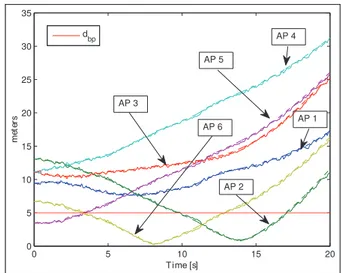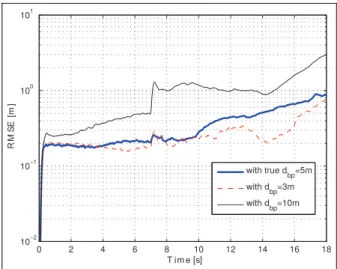Received signal strength–based indoor localization using a robust interacting multiple model–extended Kalman filter algorithm
Texte intégral
Figure




Documents relatifs
ﻮﻳﺎﻣ دﻮﻬﺟ ﺮﺒﺘﻌﺗ لﺎ ﻤﻋﻷ اداﺪ ﺘﻣإ درﺎ ﻓرﺎه ﺔ ﻌﻣﺎﺟ ﻦ ﻣ ﻦﻴﺜﺣﺎ ﺒﻟا ﻦﻣ ﻪﻘﻳﺮﻓ و ﺎﻬﻴﻓ ﻦﻣﺰﻟا لﺎﺼﻔﻧا ﻢﻏر ﻦﻳوأ.. 163 3 - ﺔﻟﺎﺣ ﺐﺴﺣ جﻼﻋ دﻮﺟو ﻊﻗﻮﺗ ﻊﻣ
amplicon for QPCR subsequently revealed differences in HF183 marker abundance among sites that were corre- lated with land use (Fig. 1a–c) and pointed to on-site treatment plants
A signal attenuation ranging model based on RSSI and CSI is established by using the attenuation factor propagation model, and the measured values of RSSI and CSI are converted
2323-4, le comité d’entreprise ou, le cas échéant, le comité central d’entreprise est réputé avoir été consulté et avoir rendu un avis négatif ; que pour lui permettre
Therefore, it is tried to find a multiple model composed by a minimal number of submodels. This number is related to the number of premise variables, so that a quasi-LPV.. form which
The model is further simplified so as to apply Kalman filter approach to es- timate displacement and unknown parameters (material properties, e.g., friction angle and
Ros, Optimization of the second order autoregressive model AR(2) for Rayleigh-Jakes flat fading channel esti- mation with Kalman filter, in: Digital Signal Processing, IEEE,
We further study the combinatorial structure of the problem. Non-trivial polynomial cases under budgeted uncertainty are exhibited, where the dominance-based formulation yields
